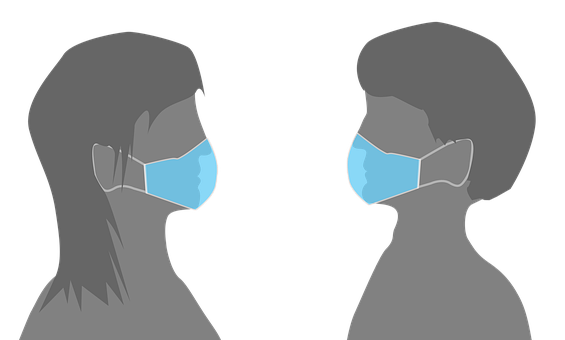One of the themes that is consistent across studies of COVID-19 is that men are at a higher risk of having a COVID infection, and at more risk of severe infection.
In this report from Italy, 60% of COVID-19 cases were male.
In this study from China, 73% of people who died from COVID were male.
In this report in the New England Journal of Medicine, 61% of people admitted to a hospital in New York City for coronavirus infection were men, and those who required mechanical ventilation were more likely to be male.
Why?
Initially, it was thought that it was because men have a higher risk of having health conditions that increase risk of severe COVID infection, such as heart disease and high blood pressure, and are more likely to smoke.
However, there may be much more to the story than that.
As blogged previously, the COVID-19 virus uses ACE2 as its receptor to get into our cells, but entry of COVID into our cells also depends on a downstream transmembrane protease serin 2 (TMPRSS2). The gene that encodes this protease has several androgen (testosterone) receptor elements upstream of its transcription start site. In some cells at least, including prostate and lung cancer cells, TMPRSS2 is expressed in an androgen dependent manner. The original SARS virus also utilizes TMPRSS2 to get into our cells, and also caused more severe disease in men. It has therefore been hypothesized that testosterone, which is much higher in men than in women, may produce more TMPRSS2, thereby making it easier for COVID-19 to get inside cells.
It is also being questioned whether there may be something about female hormones (estrogen and progesterone) being protective against COVID-19, and that this may be why women are less often and less severely affected. In a recent New England Journal of Medicine article examining mortality due to COVID-19, it was noted that women have stronger innate and adaptive immunity, and greater resistance to viral infections, than men. In research studies back in the original SARS days, it was found that removing the ovaries of female animals (thereby taking away their estrogen and progesterone production) was found to increase the risk of death from SARS.
Along this line of thinking, a clinical trial is currently being conducted to assess the effect of transdermal estrogen patch for 7 days, given to men or postmenopausal women, to see if this treatment can reduce the severity of COVID-19 symptoms. They plan to enrol 110 patients total into the study.
Interestingly, pregnant women with COVID-19 infection seem to fare better, and the question has been raised as to whether this could be related to the anti inflammatory properties of progesterone, which is a female hormone that is quite high in pregnancy. Accordingly, a small clinical trial is currently underway (40 patients total) to evaluate the effect of a five-day course of progesterone treatment in men who are hospitalized with COVID-19 infection.
Note that both of these clinical trials are very small and unlikely to be game-changers; though if either of them are positive, this would certainly lay the ground work for clinical trials on a larger scale. It is important to stress that it is not appropriate at this time to use hormonal treatment to treat or prevent COVID-19 infection. There are potential risks with hormone treatment (as with any medical therapy), and currently no data to tell us if estrogen or progesterone are of any benefit as regards COVID-19.
Subscribe to my blog (box top right) for more on COVID-19 in the coming weeks.
Share this blog post using your favorite social media link below!
Follow me on twitter! @drsuepedersen
www.drsue.ca © 2020












